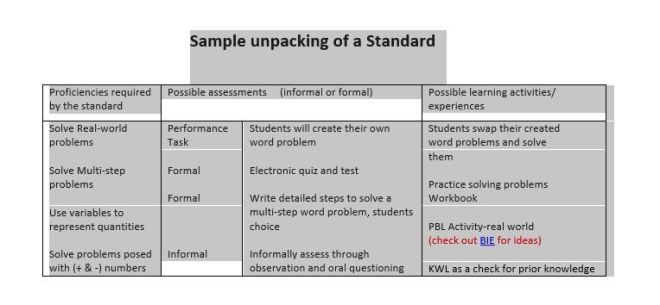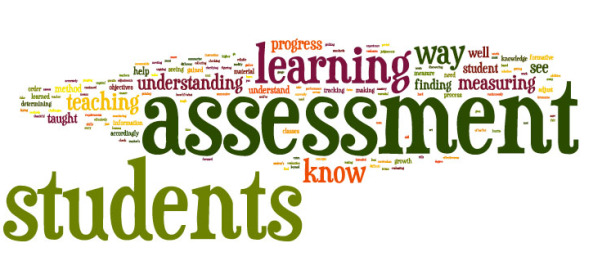Creating High Performance Learning Environments-m4u3a2-McNeese
Scenario 1 Roller Coaster Physics (Roller Coaster Physics: STEM in Action, n.d.)- In this Scenario Teacher Migdol has students working using Problem Based Learning. The students are 5th and 6th graders designing roller coasters. Not only are they learning Physics they are learning planning skills, collaborative skills, and developing cognitive thinking skills. The students are busy making and learning by doing. They have assigned roles and predetermined list of tasks and objectives.
Teacher Migdol does have high Performance expectations. A teacher that has high expectations will make sure students know what the end product should look like (Hattie, 2014). And a teacher with high expectations will make sure the constraints and parameters of the learning activity are clear. Teacher Migdol can be heard giving students the constraints of the experiment. In addition, Teacher Migdol has high ambitions for her students she purposely limits the constraints to make the problem more challenging. She is challenging them with content that is usually for higher academic grades. For example, physics is usually taught in High school and I never took physics until college.
Another indicator of Teacher Midol’s high performance expectations is her use of the “Reflect and Practice” strategy outlined in Lemov’s Teach Like a Champ and her use of Self-Reflection tools. Both tools to develop academic success. Teacher Migdol has the student complete a reflection paper at the end of the experiment. In addition, Teacher Migdol asked students to demonstrate learning a component of high performance expectations.
Teacher Migdol also has high behavior expectations. One of her goals is character development and socialization skills. Teacher Migdol describes how students are learning communication skills, leadership skills, and collaborative skills. Teacher Migdol encourages team building skills which is key for success after k-12 school.
Some of the Rules and Norm in this scenario are Teacher Migdol models expectations. Teacher Migdol makes her expectations specific and clear. Teacher Migdol has clear rules that students respect everyone and clear rules and procedures for communicating.
In Scenario 2 (3rd grade Chinese-math class.avi, 2011) the teacher is conducting a lesson on multiplication. The students have learned a song (chant) where students learn the multiplication table by rote memory. She then quickly goes to another topic subtraction.
This teacher demonstrated some strategies used by teachers with higher student performance expectations. She used a strategy used in the “No Opt Out” method (Teach Like a Champion Right is Right, 2015). She called on students that did not have their hands raised. This strategy helps the teacher include all students in the learning task, especially low performing students who are not likely to have their hand raised.
I did not see much evidence of high performance expectations. I did not see her do some things I would have expected to see like checking for understanding or having the students complete problems themselves, practicing their new knowledge. Instead the students involvement was almost passive simply watching the teacher demonstrate.
I did not notice high behavior expectations in this clip. The lesson did not seem particularly challenging. Students’ behavior requirement were to spit out the information students had previously memorized. Norms and procedures exhibited here are students are to raise their hands to answer.
Scenario 3 (Whole Brain Teaching Richwood High-The Basics, 2011) the teacher is teaching a math lesson using Whole Brain Teaching Techniques. I did not notice anything that stood out indicating this teacher has high performance expectations. Although the teacher used strategies to improve student learning these strategies are common and are not necessarily developing higher order thinking.
In addition I don’t think this teacher had high behavior expectations either. Although it was clear she definitely had behavior expectations I would not consider them high. I have seen WBT used with all ages of students but I am unclear how this learning developing the behavior of successful people. WBT appears to be a wonderful tool for classroom management however, I don’t see the connection to High behavior expectations.
The norms and procedures she used were modeling expected behavior, establishing routine, her students practice behavior, and the teacher’s expectations were specific and clear.
Setting high performance expectations among my students
For my 10th grade school students I will create learning environments that stimulate cognitive thinking skills by implementing Problem Based Learning into my classroom on a more regular basis. I plan to schedule at minimum one to two projects per month. Or perhaps one project per unit. I don’t want to be too ambitious until I know what I am doing. In the Space Probe (Project Based Learning in the Blended Learning Classroom, 2014) video the teacher mentions PBL lessons require more classroom management which appears to be true so I need to be prepared. My 10th graders are asking for a challenge, at least some are, and I want to create a sense of excitement with this particular class. They are at diverse levels and I struggle to provide content in a way that is intriguing for all levels of students. And unlike the Chinese 3rd grade (3rd grade Chinese-math class.avi, 2011) teacher I plan to teach using more than rote memorization.
Something in particular that I need to do to create a learning environment that is student directed is to believe better of my students. I need to develop and increase my own level of high expectations for my students. I admit I have rejected some lessons or activities because I doubted to ability of my students to successfully complete the challenge. Shame on me. After viewing this week’s videos, the roller coaster video in particular (Roller Coaster Physics: STEM in Action, n.d.), showed me even these very young students understand these complex theories and are applying what they’ve learned. Although we can argue that the younger you start the better. My students have been denied this type of education at an early age. In fact most of my students have huge gaps in their knowledge because of high teacher turnover and other reasons.
I hope to create a learning environment that mirrors the excitement of the roller coaster students, even my 10th graders. In addition, I hope to create a learning environment where my students are learning real world skills just as the roller coaster students were learning the skills of a scientist. I hope PBL will give students an opportunity to sample careers and see what they like. I had no idea what my major in college would be until my senior year. My time in college allowed me to sample a variety of study areas until I found the one I loved. I hope PBL will do the same for my students.
References
3rd grade Chinese-math class.avi. (2011, Jun 12). http://www.youtube.com. Retrieved Dec 13, 2015, from Retrieved from https://youtu.be/h7LseF6Db5g
Hattie, J. (2014, Aug 29). Teachers as Change Agents. http://www.youtube.com. Retrieved Dec 13, 2015, from https://youtu.be/7XWMAteuaks
Lemov, D. (2015). Teach Like a Champion: 62 techniques that put students on the path to college. San Francisco, CA: Jossey-Bass, a Wiley brand.
Roller Coaster Physics: STEM in Action. (n.d.). Teaching Channel. Retrieved Dec 13, 2015, from https://www.teachingchannel.org/videos/teaching-stem-strategies
Teach Like a Champion Right is Right. (2015, Nov 9). http://www.youtube.com. Retrieved Dec 12, 2015, from https://youtu.be/8P1o8y9ZXWY
Whole Brain Teaching Richwood High-The Basics. (2011, May 31). http://www.youtube.com. Retrieved Dec 13, 2015, from https://www.youtube.com/watch?v=8iXTtR7lfWU&feature=youtu.be





